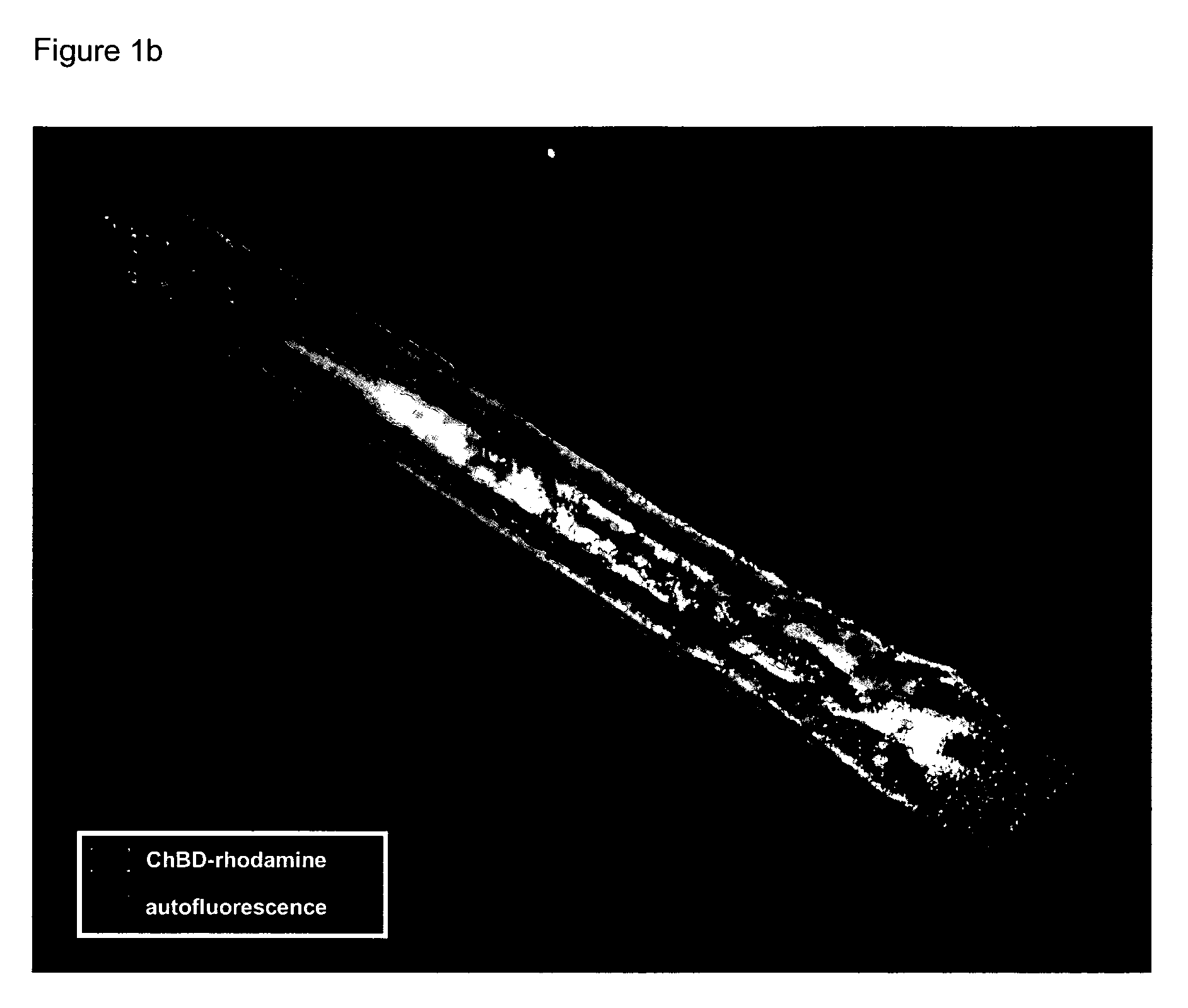Methods for manufacturing plant cell walls comprising chitin
a technology of plant cell walls and chitin, which is applied in the direction of enzymology, organic chemistry, transferases, etc., can solve the problems of small transgenic plants, relatively weak hydrogen bonding, and low chemical versatility of natural cellulose containing fibers
- Summary
- Abstract
- Description
- Claims
- Application Information
AI Technical Summary
Benefits of technology
Problems solved by technology
Method used
Image
Examples
examples
[0082]1. Cloning of Chitin Synthase Genes from Saprolegnia monoica
[0083]The oomycete Saprolegnia monoica Pringsheim 53-967 Dick was obtained from the “Centraal Bureau voor Schimmel Culturen” (CBS, Baarn, The Netherlands) and maintained on Potato Dextrose Agar in 90-mm Petri dishes. The mycelium used for the experiments was grown in the liquid medium of Machlis (Machlis L. (1953) Am. J. Bot. 40, 449-460) for 3-5 days at 25° C. in the dark.
[0084]Total RNA was extracted from 100 mg of 3-days old S. monoica mycelium, using the RNeasy Plant Mini Kit (Qiagen), coupled with the on-column DNaseI digestion. Reverse transcription was carried out with 4.5 μg total RNA using the Superscript III First Strand cDNA Synthesis kit (Invitrogen) following the manufacturer's instructions. 1 μl of the synthesized cDNA was used in the PCR reactions using the primers CHS2Fwd and CHS2Rev which were designed based on the sequence deposited under the accession number U19946 (this sequence is also disclosed ...
PUM
| Property | Measurement | Unit |
|---|---|---|
| concentration | aaaaa | aaaaa |
| reactivity | aaaaa | aaaaa |
| structure | aaaaa | aaaaa |
Abstract
Description
Claims
Application Information
 Login to View More
Login to View More - R&D
- Intellectual Property
- Life Sciences
- Materials
- Tech Scout
- Unparalleled Data Quality
- Higher Quality Content
- 60% Fewer Hallucinations
Browse by: Latest US Patents, China's latest patents, Technical Efficacy Thesaurus, Application Domain, Technology Topic, Popular Technical Reports.
© 2025 PatSnap. All rights reserved.Legal|Privacy policy|Modern Slavery Act Transparency Statement|Sitemap|About US| Contact US: help@patsnap.com



